COS and Sierra Club joined forces again to go out and experience nature in Chicago, this time at Montrose Point in Lincoln Park. Below you'll find some photos taken during the walk, and at the bottom of the page are lists of the types of birds, mammals, butterflies, damselflies, and dragonflies that we saw (with numbers seen for each species).
At Montrose Point, the first stop was Montrose Beach.
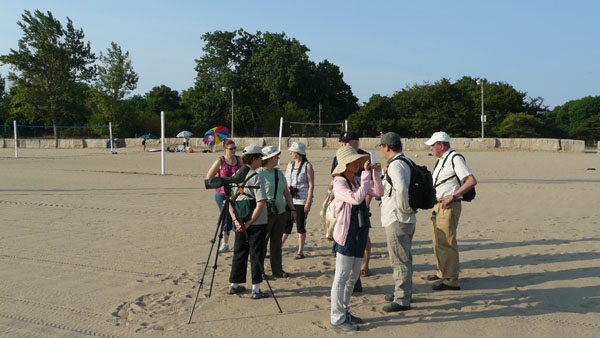
There we saw Ring-billed Gulls (on the left) and Herring Gulls (on the right).
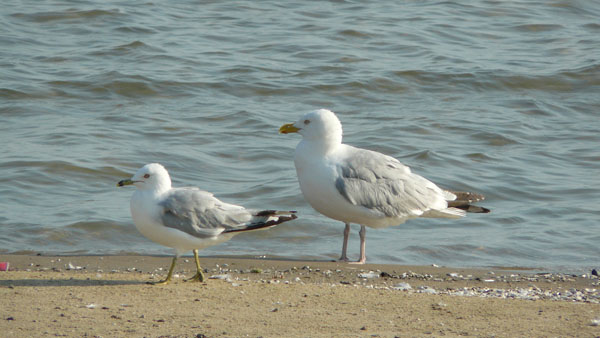
Also present were Caspian Terns with their bright orange bills ---
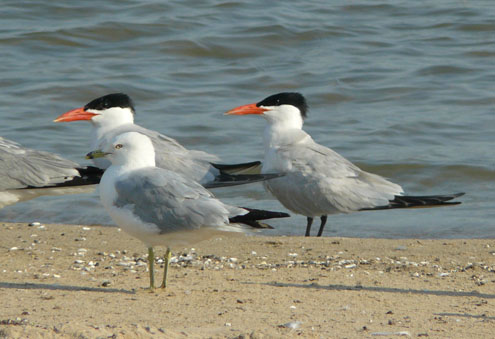
--- plus also this immature Forster's Tern (left), seen with a Ring-billed Gull (right).
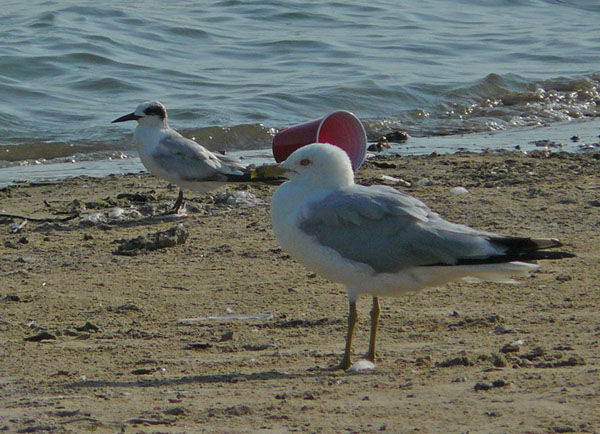
A Killdeer did its best to convince us that it was injured. But actually, the bird was fine. Its pretending to have a broken wing so that it appears to be easy prey is a kind of distraction display. It wants would-be predators to chase after it, so it can lead them away from its chicks. When the predator has been taken a safe distance away from the young, the "injury" miraculously vanishes and the Killdeer gets away.
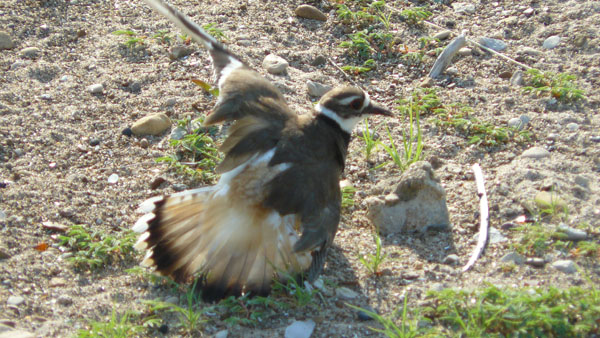
The group left the Killdeer alone on the beach and headed up into the vegetated area of Montrose Point, designated a Bird and Butterfly Sanctuary by the Chicago Park District.
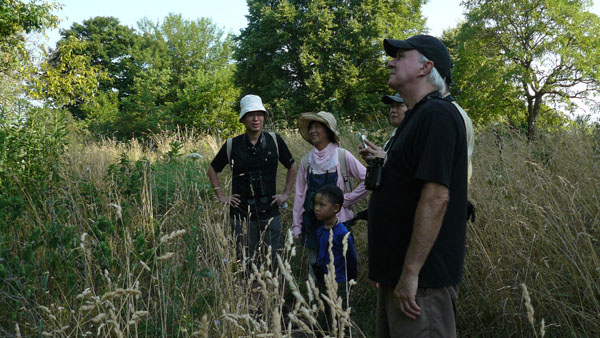
Here we saw an American Robin tending to its nest.
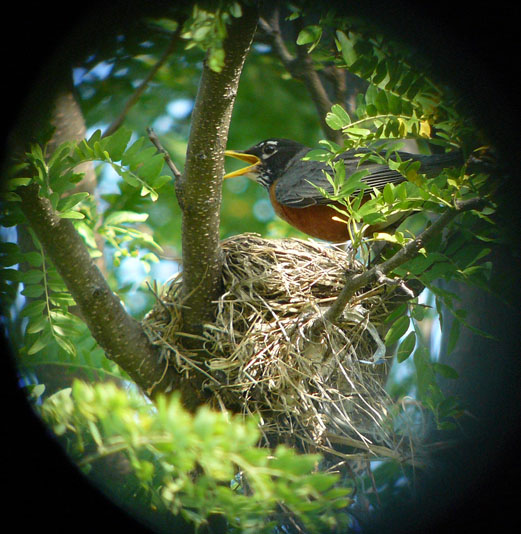
A Brown Thrasher made an appearance in Montrose's "Magic Hedge," so named because of all the rare birds that have been found there.

Looking carefully in the grasses allows you to find not only birds ---
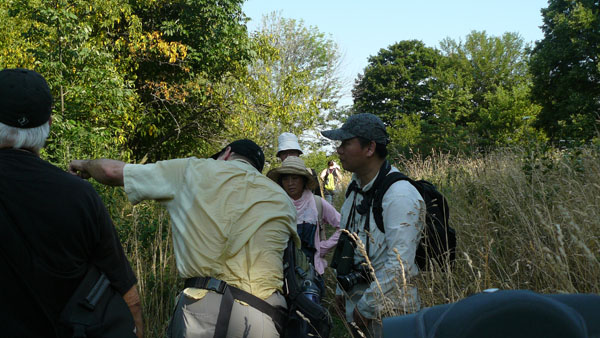
--- but also butterflies like this Fiery Skipper.

A walk around Montrose Harbor brought us to the Purple Martin colony at several apartment "buildings" installed for the birds.
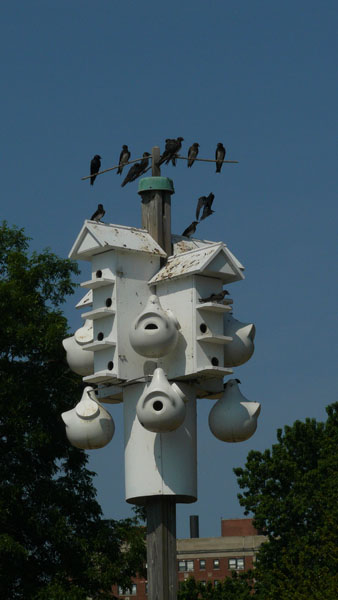
We also spent a bit of time looking at the fish that were swimming about in Montrose Harbor. After the field trip we were able to get the help of ichthyologist Greg Seegert in identifying the fish from photos that we took. This first one is a Rock Bass (Ambloplites rupestris). There were several schools of these in the harbor.
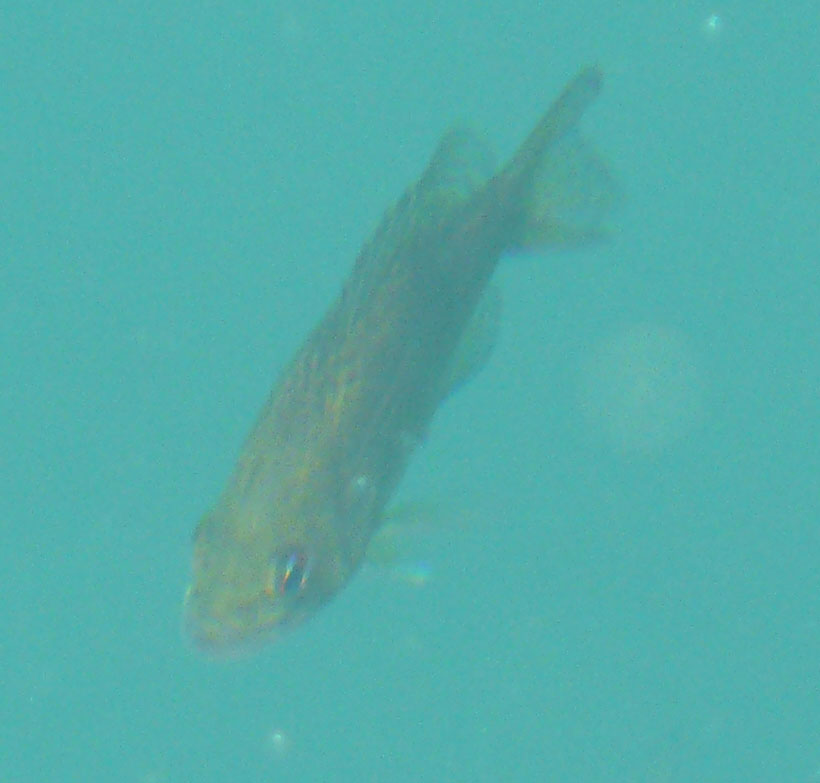
Here's another Rock Bass that appeared to be guarding a big concrete piling.

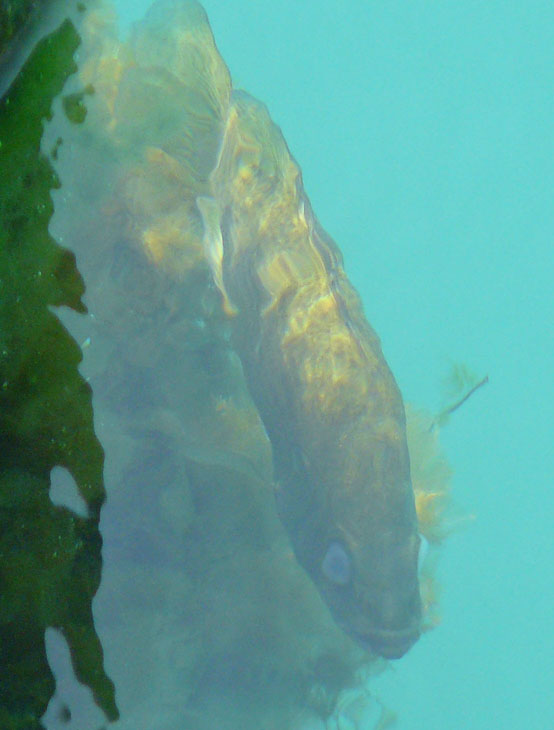
Another fish species that we saw in numbers was the Gizzard Shad (Dorosoma cepedianum). Here's one of these.
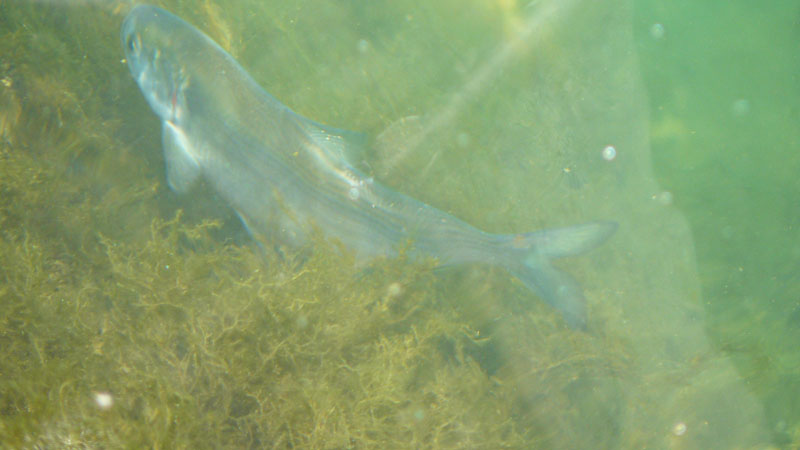
Here are two more Rock Bass.
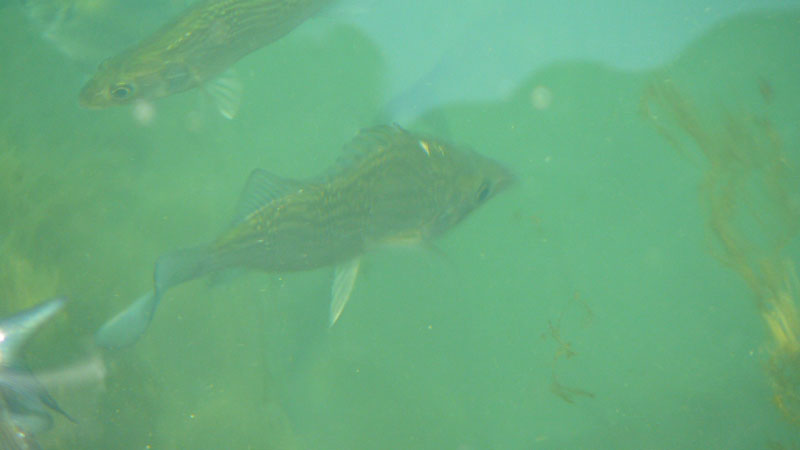
In this photograph there is a Rock Bass (top) and a Gizzard Shad (bottom).
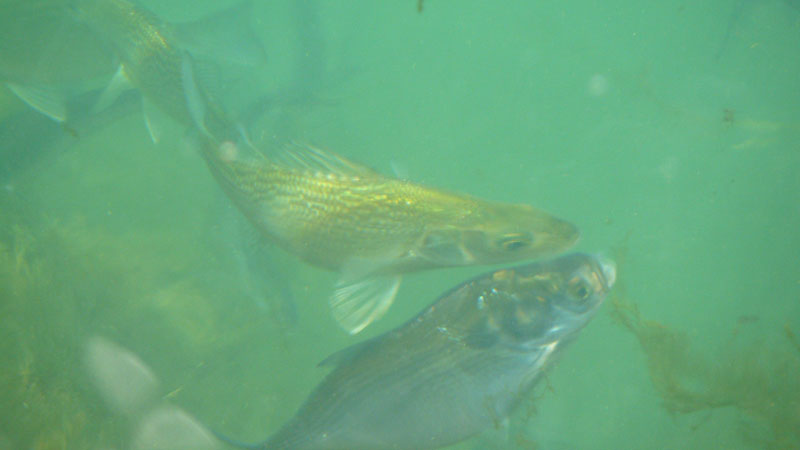
One more Gizzard Shad.
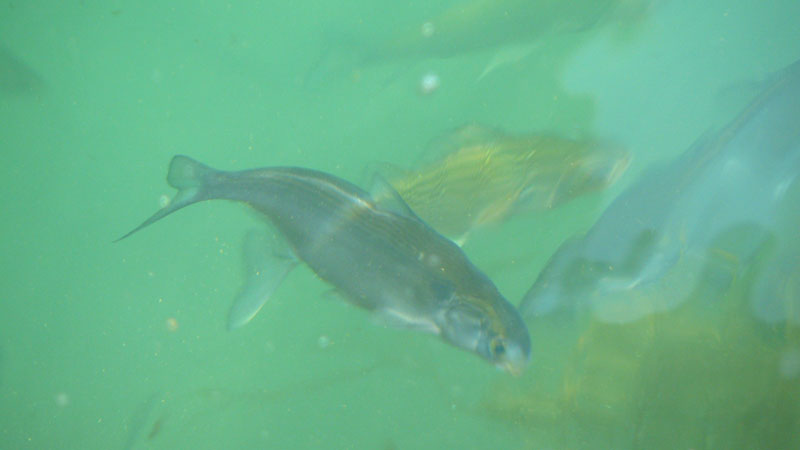
By far the largest fish we saw was this Common Carp (Cyprinus carpio) (on the left in the photo below), which was between two and three feet long. Swimming near it was an orange-colored Koi. The Koi is a domesticated form of the Common Carp.
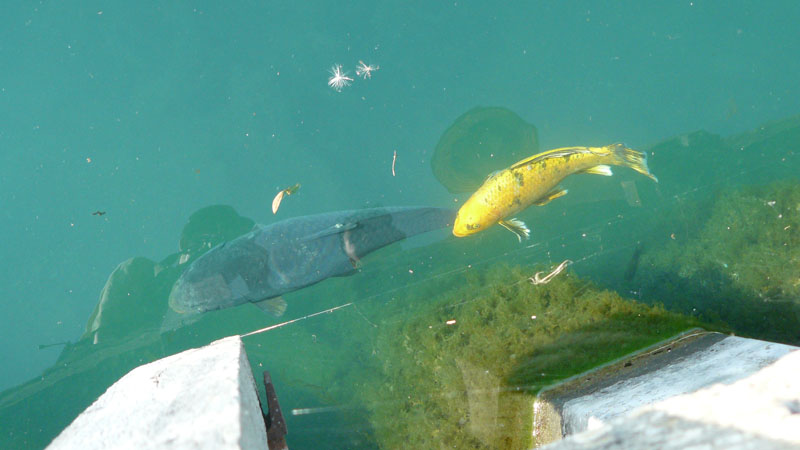
List of birds species seen, with number observed.
Canada Goose 13
Mallard 17
Double-crested Cormorant 21
Great Blue Heron 1
Killdeer 2
Spotted Sandpiper 3
Ring-billed Gull 291
Herring Gull 1
Caspian Tern 4
Forster's Tern 1
Rock Pigeon 1
Mourning Dove 2
Chimney Swift 1
Downy Woodpecker 2
Eastern Kingbird 3
Warbling Vireo 1
Blue Jay 1
American Crow 2
Purple Martin 73
Northern Rough-winged Swallow 8
Bank Swallow 2
Barn Swallow 17
Black-capped Chickadee 3
American Robin 18
Gray Catbird 2
Brown Thrasher 1
European Starling 47
American Pipit 1 [Very unusual! There are few summer records for this species in Illinois.]
Cedar Waxwing 3
Yellow Warbler 1
Song Sparrow 1
Northern Cardinal 3
Red-winged Blackbird 12
Common Grackle 22
Brown-headed Cowbird 2
Baltimore Oriole 1
American Goldfinch 5
House Sparrow 35
List of mammal species seen, with number observed.
Eastern Chipmunk 1
List of butterfly species seen, with number observed.
Black Swallowtail 1
Eastern Tiger Swallowtail 1
Cabbage White 14
Clouded Sulphur 5
Spring Azure 1
Pearl Crescent 1
Red Admiral 3
Monarch 1
Fiery Skipper 1
List of dragonfly species seen, with number observed.
Eastern Forktail 2
Common Green Darner 5
Wandering Glider 1
Spot-winged Glider 5
Black Saddlebags 3
This
page was last updated on 18 August 2012.
Contact Geoff Williamson
with any comments, updates or suggestions.